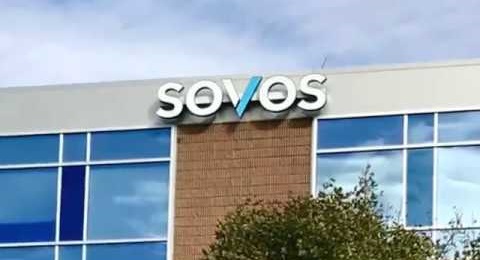Whenever I sit down with a client, the question almost always comes up: “What can I do to improve my business?” My answer always starts with: “Run your small business like a big business! When is the last time you had a board meeting? Do you have a budget?” Directors, owners and officers of small businesses often are the same person. Why would a small business owner benefit from a board meeting?
The individuals a small business owner trusts the most for advice usually include their CPA, attorney, a benefits consultant, insurance agent, investment broker and their banker. Small businesses need to invite these individuals to their annual board meeting and keep the meeting to two hours. At this meeting, as a small business owner, ask your accountant to review the financial statements and tax returns.
Present an operating budget for the new year and a capital budget for the next three years. Then open the floor for discussion and suggestions.
- Ask for input on legal matters such as employment law, protection of intangible assets, and leases.
- What worries your banker the most about your financial outlook?
- Are all insurance policies up-to-date?
- Are the retirement plans in conformity with all requirements?
- Are we missing any investment opportunities?
By the way, ask your lawyer to jot down minutes of the meeting. Here is the key: let the others do the talking. At the end of the meeting, you’ll have the outline for next year’s business plan!
Budgets in small business are the closest thing to a magic wand.
- I have never seen a business that did not improve simply by preparing a budget and comparing budget to actual results on a monthly basis. It is a simple process to format a budget into the monthly financial statements. Each month, management can easily focus on the two or three items that can produce the greatest cost savings by sorting budget variances from unfavorable to favorable.
But planning is only the beginning.
- Today’s technology makes it easier than ever before to focus on two key ingredients of implementing the business plan: efficiency and effectiveness. Relatively small investments in technology let today’s small business owners run their business like their big counterparts. For example, as computers became increasingly important in my own practice, I spent more time making sure that the hardware and software were always current. In fact, I became a full-time computer guy and part-time accountant! By investing in a fast DSL, I was able to switch to a virtual office environment. All my software is now ASP, and I am one again a full time CPA!
Virtual office solutions make going paperless easier than ever.
- Almost all reports can be produced in electronic format rather than on paper. Large amount of data can be securely stored offsite, and can be retrieved on demand. Information can be integrated across applications and can be shared between offices. Managers can review and sign off work without paper files. Small business systems can now electronically exchange data with suppliers and customers.
Outsourcing, both domestically and internationally, can often be accomplished almost instantly, saving time and resources.
Dashboards help keep on top of cashflow.
Real-time business solutions, such as computer dashboards, can be used to improve cash flow. Dashboards make it possible to monitor and manage cash, inventory, accounts receivable and payables far more efficiently than batch processes.
Take advantage of inventory management solutions
Low-cost scanners and UPC codes are available to small businesses to automatically track inventories. Nowadays, p ractically every item purchased has a barcode on it. Barcodes track large number of items in a store and help reduce shoplifting. Since the adoption of barcodes, many small businesses have profited from the savings. Barcode readers may be combined with tags-on-demand printers to process receiving and shipping electronically, accurately, automatically, and in real time.
Scanners can also improve productivity in document management. Barcodes facilitate the separation and indexing of documents that have been imaged in batch scanning applications. Examples include invoices, purchase orders and W-2s.
RFID and Kanban systems make tracking easier.
Small businesses are beginning to take advantage of Radio Frequency Identification (RFID). RFID tags have the potential to reduce the cost and increase the efficiency of managing and accounting for inventory. RFID systems consist of tags, transceivers and a computer system. These components share not only product information, but also product location, arrival and shipment dates and time. A big advantage of RFID tags over bar codes is the fact that RFID transmitters and receivers do not require a line of sight, as bar-code technology does. This makes taking physical inventory easy. For example, individual products can be counted inside boxes or containers.
Product availability, cost, retail price and temporary discounts can be tagged to individual products. This technology, for example, can be used to perpetually control and monitor the inventory of prescription drugs and pharmaceutical supplies in a medical practice. It can also be applied to identify slow-moving and obsolete items.
Electronic Kanban signaling systems are now affordable for small businesses. These systems trigger the movement, production, or supply of inventory items. Kanban aligns inventory levels with actual consumption via a closed-loop replenishment process. These systems signal suppliers to produce and deliver a new shipment whenever a Kanban “lot” of material is consumed. Internet-based Kanban brings visibility to both buyers and suppliers.
Payroll is crucial, and not only to your employees.
For many small businesses, payroll is the single most significant cost item. Yet many employers still use old-fashioned mechanical time clocks and hard-to-figure time cards. I recall a client who went out of business because he was never able to effectively control labor costs. With about sixty employees, he never was able to plan and control overtime. Converting hard-to-read hours and minutes into payroll hours led to math errors. Underpaid employees are quick to point out mistakes. But overpaid employees are typically not as forthcoming. Businesses that employ ten or more employees may be able to save as much as $10,000 per year simply by using a state-of-the art electronic time clock. These systems are available for less than a thousand dollars. Digital clocks use magnetic ID tags or finger prints, reducing time fraud. Detailed, timely payroll reports make payroll processing far more efficient and controllable.
Certifying the quality of your product can open new and bigger doors.
Running a small business like a big business also requires giving visibility to your product quality. For example, a business may be able to tap into significant markets with the ISO 9000 Certification. The ISO 9000 Certification Starter Kit was designed specifically for small business. It includes a detailed project plan with customizable document templates, how-to articles, worksheets and audit prep tools. It also comes with personalized support from the ISO in-house consulting staff. The goal is to avoid wasting resources and to streamline the ISO certification project.
Don’t forget the Customer Service Department.
- In a small business this department may be only one person. But it may be the only voice customers hear when they call. This department must be staffed with well-trained personnel who are given the tools to make sure all customers receive quality professional service. Make sure that the employees in customer service are always friendly and become your customers’ advocate! Low-cost software is available that allows your customer service staff to personalize each encounter. Bits of personal information that may come up during a friendly conversation, such as the customer’s birthday or his pet’s name can be added to the customer’s file. Customers’ specific preferences or requirements can easily be recorded and be shared, as needed, with other departments.
Running your small business like a big business can make a big difference in the bottom line. Today’s affordable technology makes lean manufacturing and trading a realistic opportunity for small business.
Hendrikus (Hennie) van Bulck is a co-founder of Van Bulck & Company CPAs, a Sumter, South Carolina accounting and business management consultancy. He earned an MBA and Ph.D. in International Business from the University of Georgia and is an assistant professor of business administration at the University of South Carolina Sumter.
Thanks for reading CPA Practice Advisor!
Subscribe Already registered? Log In
Need more information? Read the FAQs



